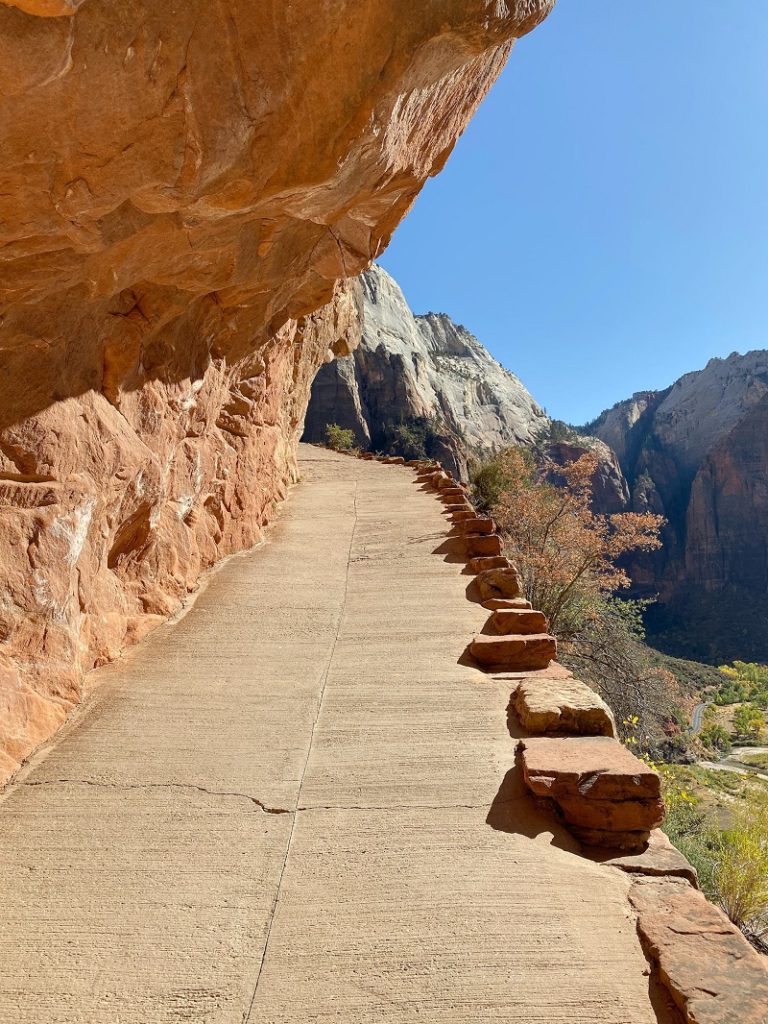
Utah is a haven for nature enthusiasts and a haven for adventurers with its breathtaking landscapes of arches, canyons, rivers, lakes, and dunes.
With its best five national parks, collectively known as the “Mighty 5,” as well as numerous additional state parks and national leisure areas, Utah provides a wide range of travel options for hikers, campers, tourists, and road trippers.
The best national parks in Utah has its distinct geology, sights, and activities. The parks mentioned below are some of Utah’s most popular tourist destinations and are perfect for people looking to sightseeing or go for a scenic drive.
Some people are better known than others for particular pastimes like off-roading, boating, climbing, or trekking. Try visiting more than one area.
Also Read: 10 Clearest Water Beaches In Florida
Best Time To Visit Utah National Parks
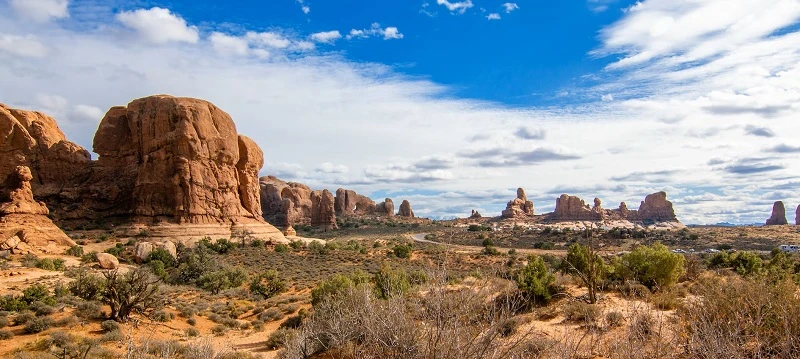
Spring: the best time to visit Utah for outdoor activities like hiking
From cool spring and autumn temperatures to snowy winters and scorching summers, each season offers a unique opportunity to explore Utah’s National Parks.
In early spring, Utah can still be quite cold, and cold rain is typical. But for many, mid-April to June are the finest times to travel to Utah. The climate is typically pleasant and mild during this time, making it ideal for outdoor activities in Utah’s state and national parks.
Peak blooming season in Utah occurs in April, making for a picturesque background of wildflowers for any romantic vacation. There are still locations in Utah where you can ski or snowboard in the spring, despite how temperate the majority of the state is during this season.
Summer: Utah’s best months for water sports and urban exploration
The best times to visit Utah’s outdoors are still late June and early September, when the weather is still usually pleasant. Additionally, Park City and Salt Lake City, two of Utah’s most popular cities, are at their liveliest during this time.
It’s also important to note that visiting Utah’s national and state parks in August, when temperatures routinely soar above 100°F, is not advised unless you’re a highly experienced hiker in excellent health.
Fall: the best time to visit Utah’s national parks
It’s no coincidence that many of the best places to stay in Utah are near the state’s storied national parks — and the autumn months are the best time to visit them.
The weather is typically mild and the scenery is at its most breathtaking during this time of year, whether you want to go on an excursion in Zion National Park or hike in Bryce Canyon.
Utah’s foliage changes colour in the fall, a phenomenon that occurs throughout the rest of the world but is made more noticeable here in Utah’s pristine woods and canyons.
Winter: the best time to go to Utah for skiing and snow sports
Although Utah’s winters can be difficult, they also make it a fantastic location for snow activities.
From late December to early January is the best time of year to travel to Utah for skiing, snowboarding, and hiking in locations like Olympic National Park. Travel to Utah typically declines in February and early March due to the state’s coldest temps and biggest snowstorms (or rainstorms in lower elevations).
The holidays are a fun time to explore major cities like Salt Lake City, especially in December when the city’s holiday lights are turned on.
The best time of the year to visit Utah is either spring or fall
The majority of tourists come to Utah to see its national parks and monuments, so spring and fall are typically the best seasons to travel there. During these times, it is rare that you will encounter weather-related problems (delayed flights, closed roads, etc.), and most of the state is accessible to travellers.
Remember: If you are visiting the parks, a Utah travel agent can assist you in booking the best hotels in Moab, close to Arches National Park, as well as the best hotels in Park City, close to Mt. Baldy, a well-liked climbing spot in the area.
Best National Parks in Utah
With our list of the best national parks in Utah, you can map out a path and visit as much of the state as your time permits.
Zion National Park
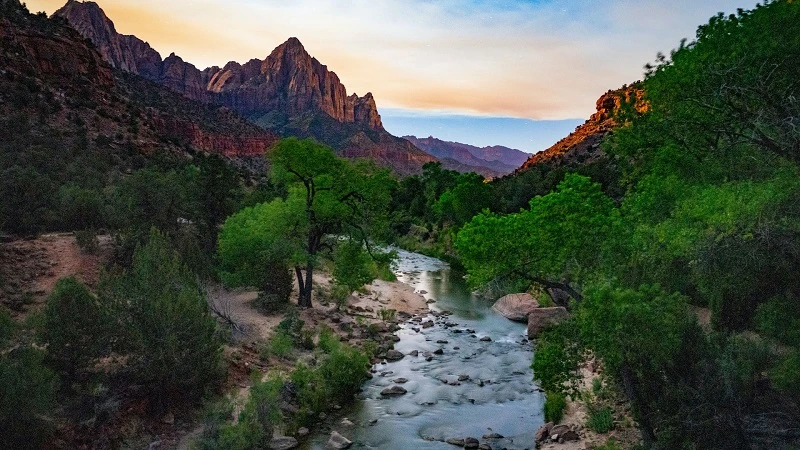
One of the best national parks in Utah and home to one of the Southwest’s most breathtaking vistas is Zion.
The valley is surrounded by enormous cliff walls and mountains, which gave birth to the term “vertical park,” which is frequently used to describe Zion.
Waterfalls that cascade down the ledges in the spring feed the Virgin River as it winds through the gorge.
The park and its sights are accessible via two beautiful roads, but more of the area can be seen on foot. There is a vast network of hiking paths in Zion that lead through canyons and along ridges above.
Hiking beneath the enormous rock walls or up the Virgin River through The Narrows will allow you to fully submerge yourself in the scenery. Courageous hikers can also take in the breathtaking views from lookouts more than 1,000 feet above the canyon floor.
A free shuttle service runs along the Zion Canyon Scenic Drive from spring to autumn. At any of the stations along the route, guests can board and exit. This road is accessible to private cars all year long.
The most common landing location is Springdale, Utah. Remember: Zion campgrounds and lodgings fill up quickly as Utah’s (and the nation’s) third busiest national park.
Highlights include the aforementioned Narrows and Angel’s Landing, as well as climbing the Subway or, if you can’t handle Angel’s, the Watchman Trail, Observation Point, or Zion Canyon Overlook.
Also Read: The Best Time To Visit Amsterdam
Canyonlands National Park
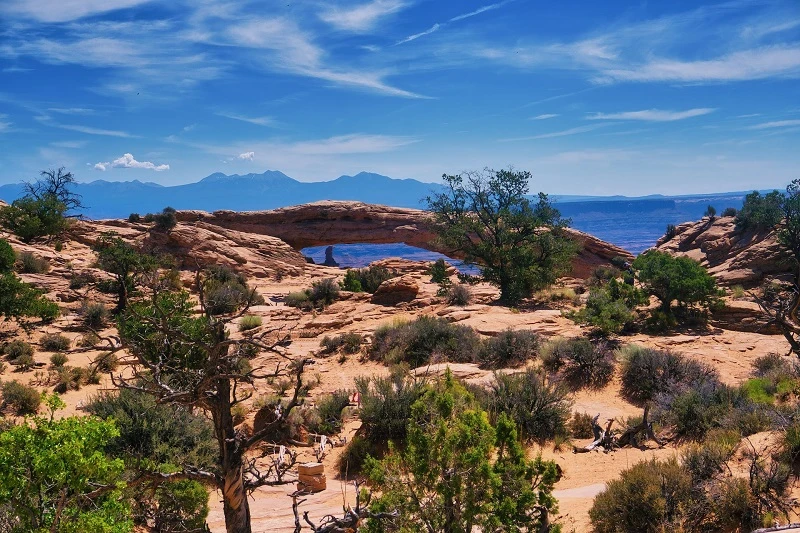
Canyonlands is the Grand Canyon of Utah and is also one of the top five national parks in Utah.
These two parks, which are close to one another and can both be reached within a single vacation but are each quite time-consuming, are about a 30-minute journey from Arches National Park.
Four sections make up Canyonlands National Park. The most well-known is Island in the Sky, followed by Needles, and the Maze is in a much more remote location that many visitors never visit. The rivers that separate these regions make up the fourth district.
One of the most breathtaking sights in the whole of the state can be found in the park’s Island in the Sky district, where you can gaze out over the carved landscape of plateaus and canyons.
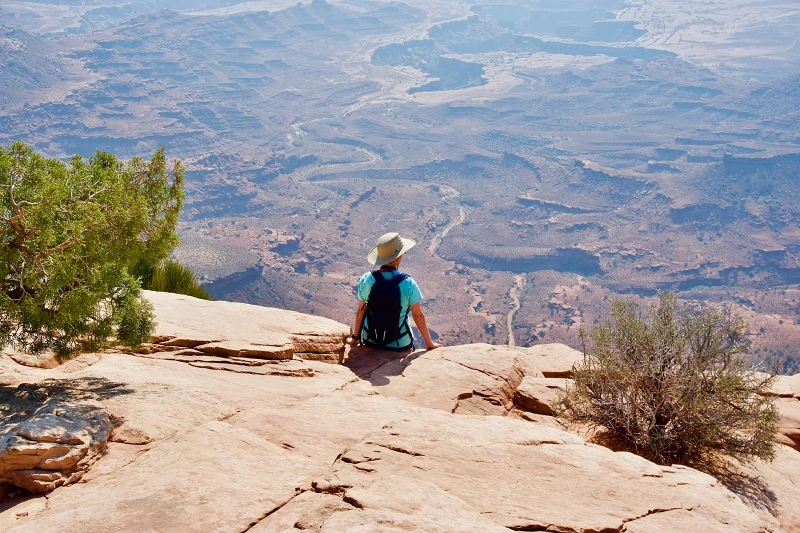
This is the centrepiece of Canyonlands National Park and a must-see for tourists.
The short hike to Mesa Arch, a stunning and dramatic arch perched on the edge of a 500-foot drop and framing the faraway landscape, can also be done from here. And these are just two of the locations in this particular park area.
Visiting About an hour’s drive west of Moab is the CanyonlandsVisitor Center, which is situated in the Isle in the Sky neighbourhood.
Highlights include the breathtaking Landscape Arch, the Green River Overlook, and bicycling or off-roading along the Shafer Trail, White Rim Trail, and/or Dead Horse Point’s insane switchbacks.
Other well-known and challenging off-roading routes include Hell’s Vengeance and Elephant Hill.
Bryce Canyon National Park
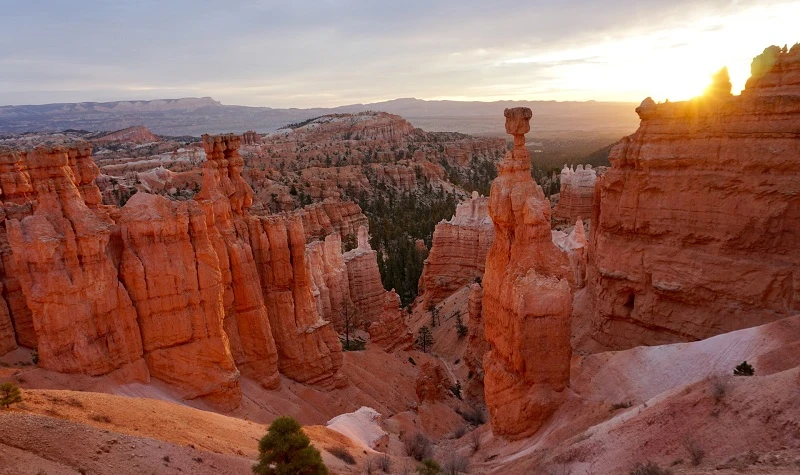
Bryce Canyon National Park is another best national parks in Utah. It is a fantasy world filled with towering stone spires and balanced rock forms known as hoodoos in orange, gold, cream, and pink.
You can view a seemingly surreal landscape from the lookouts along the canyon’s rim as you gaze out over the bowl of hoodoos. The Rim Trail’s Sunset and Sunrise Points offer the most breathtaking vistas.
Take a stroll along one of the hiking paths that wind their way around the base of these enormous spires and peculiarly shaped stone formations to gain a different viewpoint.
Several ancient bristlecone pines, which are less prevalent in this region of Utah, can be found in the park, which is located at an elevation of between 8,000 and 9,000 feet.
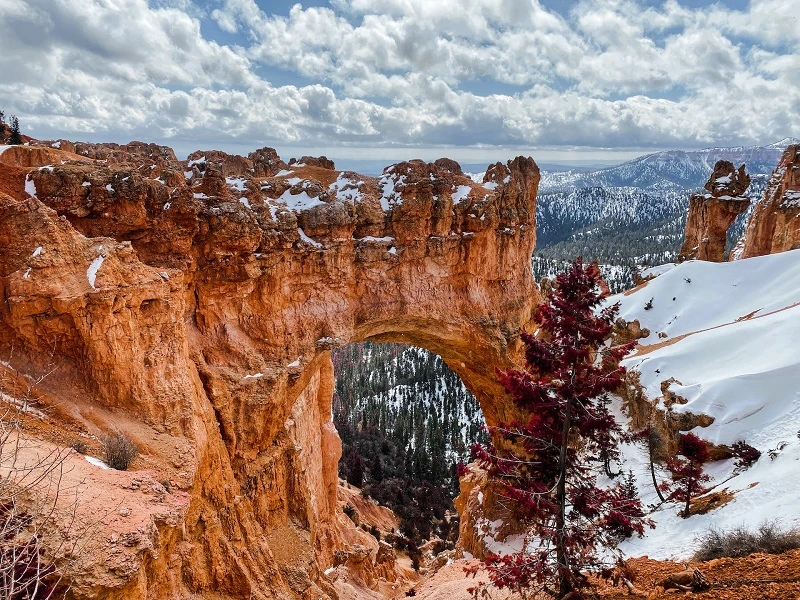
Camping here can be chilly due to the area’s high height, even in the summer. There are some lovely campgrounds in the area tucked away among the pines. Motorhome campgrounds and wilderness camping areas are nearby.
In contrast to Arches, Bryce is not close to a major tourism hub, so amenities are scarce. However, there are a few motels and eateries right outside the gate or in the close-by Tropic to the east of the park. You can see and hike almost everything in a few days due to its tiny size.
Bryce is frequently combined with a journey to either Capitol Reef National Park or Zion National Park, both of which can be reached within an hour or two via the Utah 12 Scenic Byway.
Also Read: Kayaking In Maryland: The 15 Best Places
Capitol Reef National Park
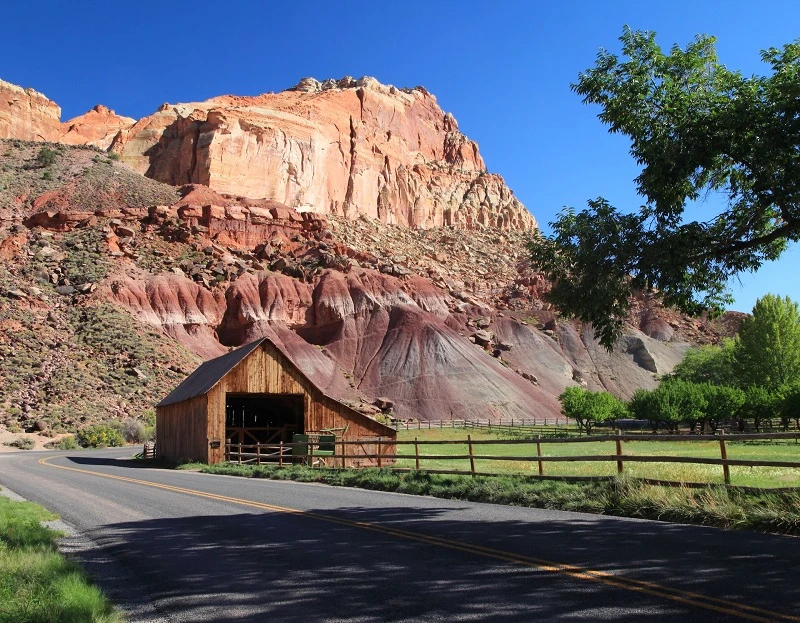
Capitol Reef National Park, one of Utah’s “Mighty 5” parks, is another location with striking granite formations. Capitol Reef appears to be a massive wall of orange, pink, and purple colours on the horizon when approaching from the south, especially in the late afternoon when the sun is low in the sky.
The most dramatic part of the park can be seen up close on the scenic drive, but as you approach the visitor center from the town of Torrey, you’ll also pass by fascinating locations like Goose necks Overlook and Panorama Point.
Capitol Reef, which receives fewer visitors than the other major parks, provides a unique experience with fewer visitors, more solitude, and a sense of tranquillity.
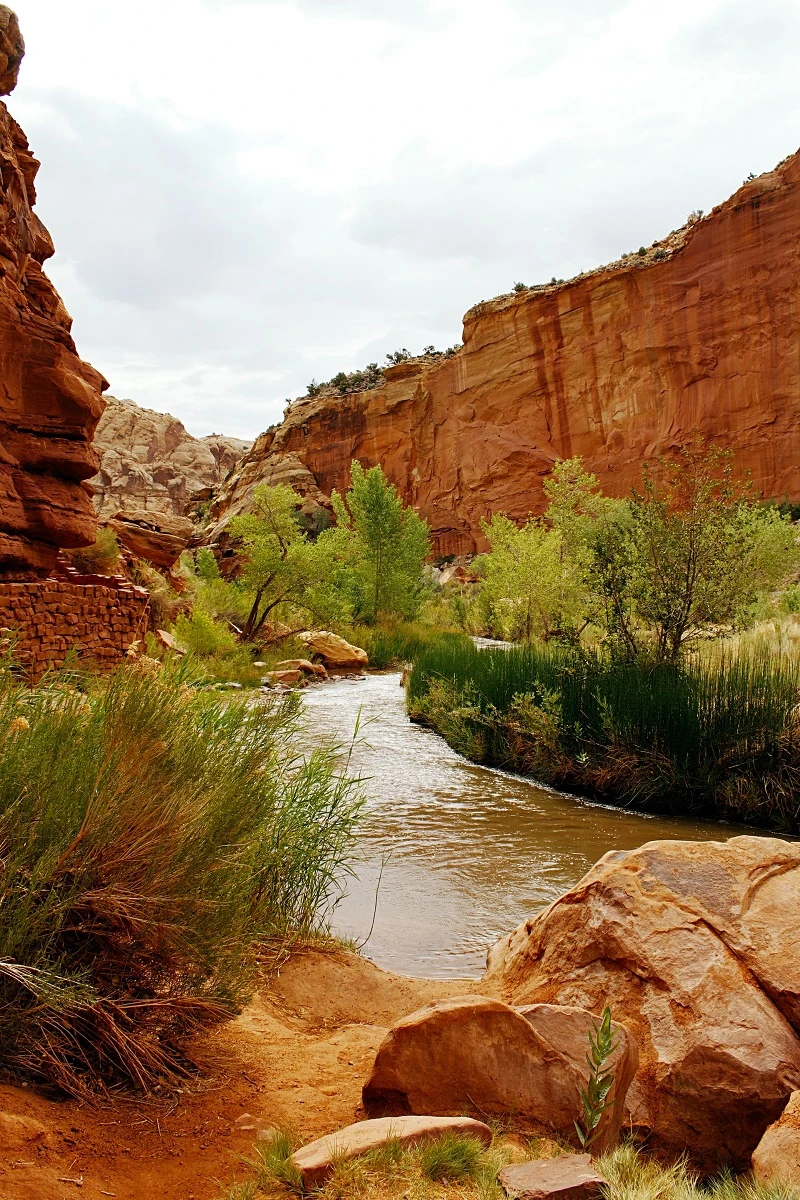
This park does not take as much time to see as places like Arches, Canyonlands, or Zion National Park, but it’s worth a stop.The park has one of the best national park campgrounds in Utah and provides fantastic camping opportunities.
Fruit Campground is located at the entrance to the park, 15 minutes from the village of Torrey, and is surrounded by orange cliffs and an orchard. Along the park’s scenic road, there are several smaller camping sites, as well as RV parks outside the park.
The closest home base for viewing Capitol Reef is the town of Torrey, which is only five minutes away.
The scenic journey, canyoneering Sulphur Creek, and hiking Hickman Bridge, Cassidy Arch, and Grand Wash are some of the highlights. Cathedral Valley is just as good as anything you’ll discover in Canyonlands if you have an off-road vehicle.
Arches National Park
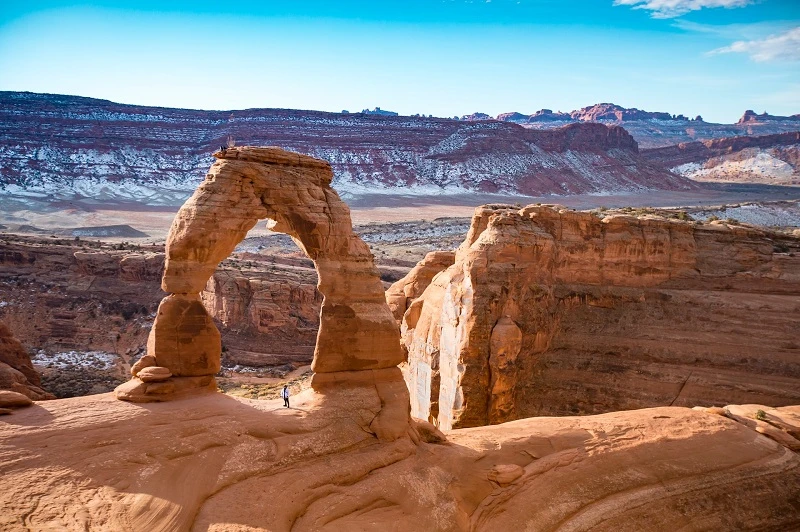
Arches National Park is one of the most beautiful places in the National Park service in Utah. More than 2,000 natural arches can be found there, but one is so well-known that it appears on almost all Utah travel guides and licence plates.
Together with one of the darkest night skies in the United States, you’ll also witness various rock formations like fins, monoliths, pinnacles, and enormous balancing rocks.
While many of the park’s most well-known attractions are viewable from its Scenic Drive, Arches will reward those who aren’t scared of a little physical effort with incredible and unforgettable payoffs on each of its trails.
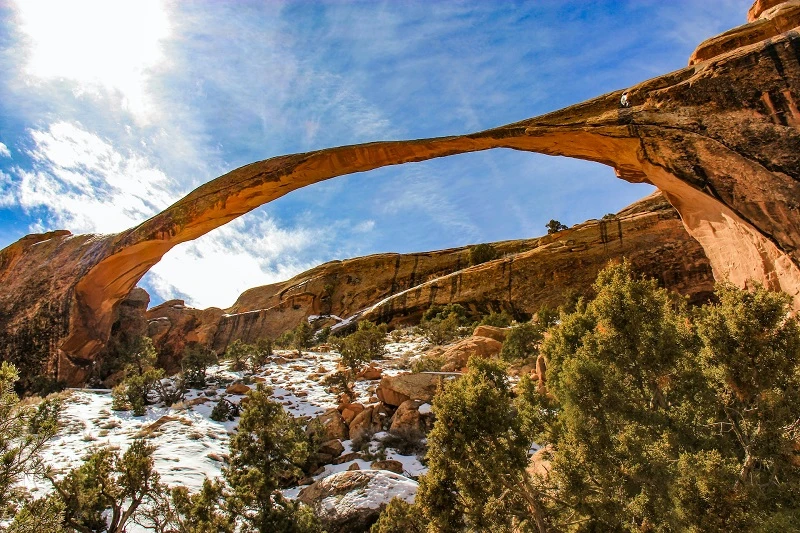
The Arches Scenic Drive is the only route that passes through Arches National Park. From Highway 191 to the Devils Garden entrance at the far end of the park, it is a distance of 19 miles.
The entire trip takes about 30 minutes, but it will seem to take much longer as you stop to admire the arches and take side trips to explore different viewpoints and hiking paths. You can buy and download a self-guided driving tour in advance of your stay.
It is easiest to travel to Arches from Moab, which is only ten minutes to the south. Hotels, eateries, and tour guides abound here to help you make the most of the region.
Highlights within the area include hiking Delicate Arch, Devil’s Garden, and Fiery Furnace. Walking Park Avenue, seeing Double Arch, and watching climbers ascend Balancing Rock are some additional attractions.
Conclusion
Utah’s best national parks as mentioned above are a wonderful vacation destination with activities like trekking in Zion National Park, exploring the Great Salt Lake, and learning about Mormon history.
Visitors can experience the state by hiking, biking, boating, and other activities thanks to Utah’s varied landscape. Utah’s topography is nothing short of fascinating, from the snow-capped summits of the Wasatch and Uinta Ranges to the red rock formations in Red Canyon.
Utah also has a lot of museums and galleries for people who want to experience the culture. Here, you can tour historical sites and other man-made structures.
